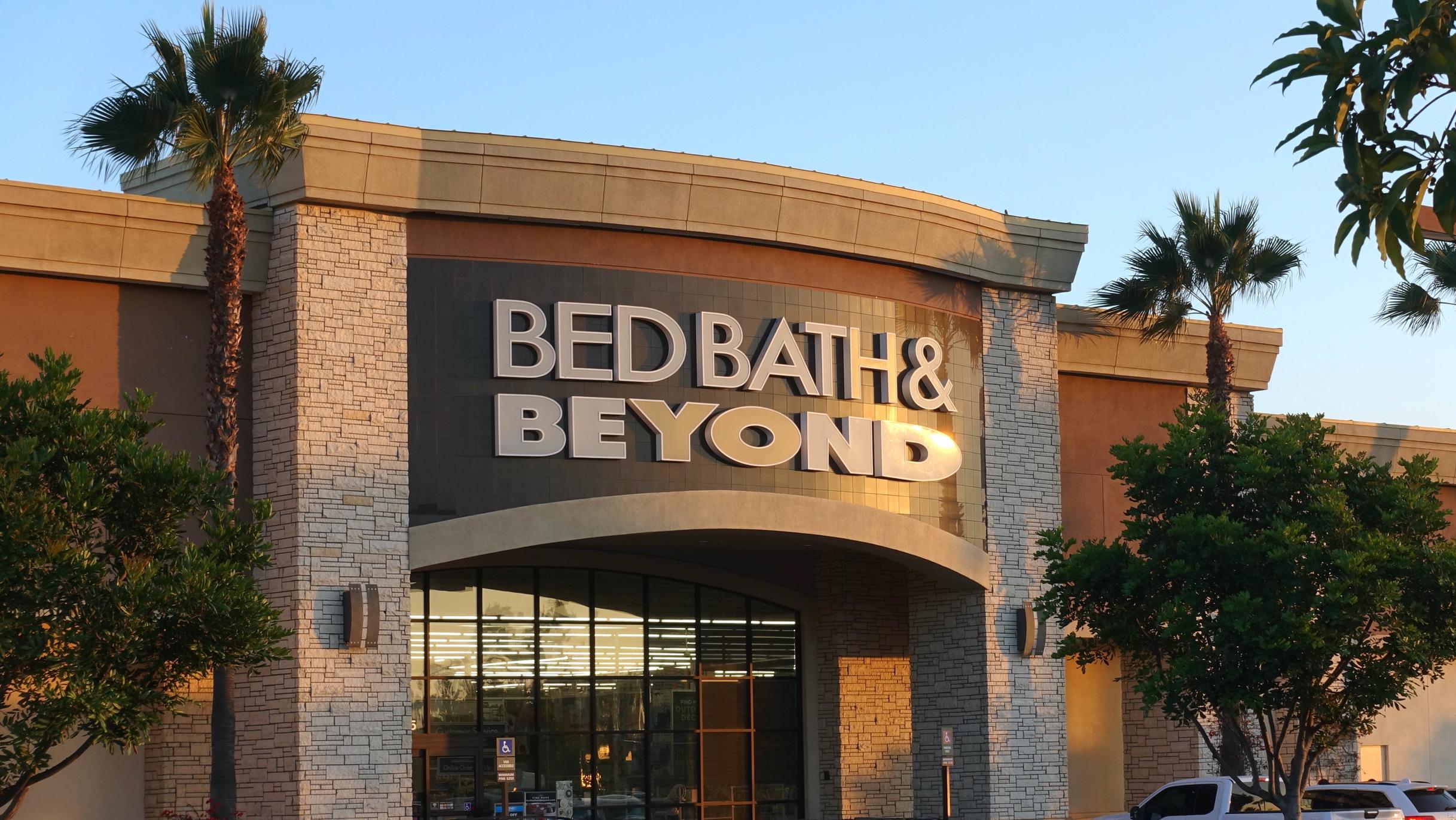After another disappointing quarter that saw a significant decline in sales and a serious loss for the period, Bed Bath & Beyond is being challenged by both its investors and critics with a fundamental question: Is its emphasis on internally developed private brands the right strategy? The answer could decide the fate of the big-box retailer, which has been trying to reinvent itself in the middle of a pandemic and global supply chain meltdown.
The results for the quarter did not come as a shock to anyone closely following Bed Bath & Beyond. They follow similar declines over the past two quarters, amid what looks like the start of an overall slowdown in the broader home goods industry. In reporting their numbers over the past month, retailers like RH, Home Depot and Lowe’s have all noted that starting sometime in late February or early March—not coincidentally the beginning of the Russian invasion of Ukraine—retail traffic and sales started to slow down. The two big home-improvement chains are forecasting a flat 2022, while RH says it is uncertain if this is the start of a momentum shift or just a momentary blip that will see business pick up again later in the year.
Bed Bath & Beyond’s managers, led by CEO Mark Tritton, still say the company is on the right track and assert that their plan for store remodelings, continued closing of poorly performing locations and a rebuilding of the company’s merchandising strategy is going to pay off once things calm down with the supply chain. It's that last point that investors, outside agitators and the retailer’s suppliers question the most.
The company has said it expects private label goods—so called “owned brands”—to account for one-third of its revenue by the end of 2023. At a $9 billion tracking rate for overall sales, that’s $3 billion a year, which would represent a significant increase from the company’s previous house brand penetration—a severely underdeveloped part of its business.
Investing in private label brands is not a bad plan for retailers looking to differentiate their product assortments and keep shoppers from doing deep-dive pricing comparisons online. Home retailers from the Williams-Sonoma group to At Home to Macy’s have all invested heavily in their own brands, and it has generally worked.
Elsewhere in the broader world of retail, apparel merchants like H&M and Gap all subscribe to the theory of store-as-brand, with few (if any) other labels in their assortments. The big national discounters Walmart and Target are also heavily into house brands for much of their home assortments, particularly in categories like textiles and decor.
In developing its own brands, Bed Bath & Beyond is adapting a widely used and historically proven strategy. But it’s clearly a painful process. As a retailer that previously depended on its vendors for both product development and supply chain fulfillment, the company has had to build its internal departments virtually from scratch, with the added complication of doing it during a global pandemic.
The result has been sloppy execution. The company managed to create half a dozen new brands in a relatively short period of time, but its development efforts have resulted in a range of disappointing merchandise. In the view of many in the industry, the products are bland and often of a lower quality than the goods they replaced. Sourcing, too, is a challenge. Even in the easiest of times, inventory management is a steep learning curve—but these are not the easiest of times, and products are just not getting to store shelves at the speed and volume needed. On its quarterly call with analysts earlier this week, the company conceded as much, saying it left $175 million in revenue somewhere between here and its Asian factories because shipments didn’t arrive on time. Some promotional materials, including mailed circulars, featured goods that never showed up.
Which takes us back to the original question: Executed correctly, under better circumstances, would Bed Bath & Beyond’s private label strategy work better? Maybe. But already, there are anecdotal reports from suppliers that the retailer is bringing in more outside branded goods for the back half of the year, which would seem to indicate it recognizes the cracks in its plan. Yet for the store to truly be successful—and competitive with retailers, from Amazon and Wayfair to Kohl’s and Macy’s—it needs its own products that can’t be found anywhere else. Just how long management, investors and shoppers will wait for this plan to start working is impossible to know—but they certainly won’t wait forever.
Homepage image: © Simone/Adobe Stock
____________
Warren Shoulberg is the former editor in chief for several leading B2B publications. He has been a guest lecturer at the Columbia University Graduate School of Business; received honors from the International Furnishings and Design Association and the Fashion Institute of Technology; and been cited by The Wall Street Journal, The New York Times, The Washington Post, CNN and other media as a leading industry expert. His Retail Watch columns offer deep industry insights on major markets and product categories.





























